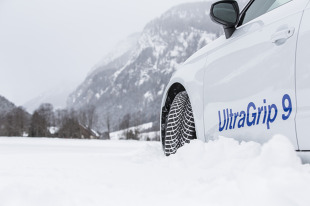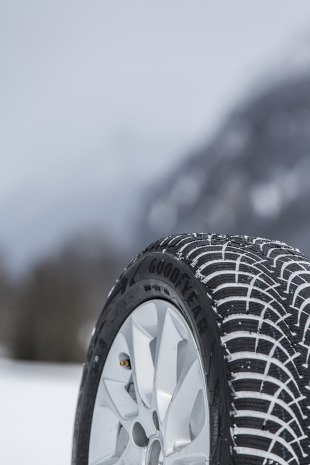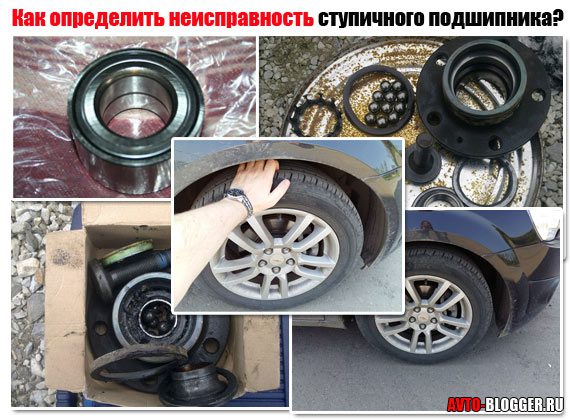
Winter tires for all weather
 The latest trends in winter tire design remain the same - they should provide shorter braking distances, more reliable grip and handling - no matter what kind of weather we encounter on the track. We recently had the opportunity to get to know the latest Goodyear tire.
The latest trends in winter tire design remain the same - they should provide shorter braking distances, more reliable grip and handling - no matter what kind of weather we encounter on the track. We recently had the opportunity to get to know the latest Goodyear tire.
 Winter in our country is not only uneven, so a modern winter tire must perform well not only on fresh or packed snow, ice and slush, but also on wet and dry surfaces. That's not all, drivers expect these tires to provide a high level of comfort tailored to their driving style. The tire should also be quiet and reduce fuel consumption. The belief that wide tires should not be used in winter is a thing of the past. Wider tires have many advantages: better contact with the road, shorter stopping distances, confident and stable handling and better grip. Therefore, the creation of such a tire is a technological work of art, to which, among other things, tread designers and engineers and tread compound specialists.
Winter in our country is not only uneven, so a modern winter tire must perform well not only on fresh or packed snow, ice and slush, but also on wet and dry surfaces. That's not all, drivers expect these tires to provide a high level of comfort tailored to their driving style. The tire should also be quiet and reduce fuel consumption. The belief that wide tires should not be used in winter is a thing of the past. Wider tires have many advantages: better contact with the road, shorter stopping distances, confident and stable handling and better grip. Therefore, the creation of such a tire is a technological work of art, to which, among other things, tread designers and engineers and tread compound specialists.
American tire giant Goodyear has unveiled the ninth generation of the UltraGrip9 winter tire in Luxembourg for European buyers looking for tough road tires. Fabien Cesarcon, who is responsible for the company's products in Europe, the Middle East and Africa, was pleased with the tire tests on the local track. It draws attention to the sipes and edges of the new pattern developed by UltraGrip9 to match the shape of the tire bead, i.e. the contact surface of the tire with the road, as closely as possible. This means that regardless of the maneuver, the tire responds confidently when driving straight, when cornering, as well as when braking and accelerating.
 The variable geometry of the blocks used provides reliable handling on the road. A large number of ribs and high sipes on the shoulder blocks guarantee better performance on snow, while the high sipe density and squarer contact surface improve ice grip, while the hydrodynamic grooves increase hydroplaning resistance and improve traction. on the melting snow. On the other hand, compact shoulder blocks with 3D BIS technology improve braking performance in the rainy season.
The variable geometry of the blocks used provides reliable handling on the road. A large number of ribs and high sipes on the shoulder blocks guarantee better performance on snow, while the high sipe density and squarer contact surface improve ice grip, while the hydrodynamic grooves increase hydroplaning resistance and improve traction. on the melting snow. On the other hand, compact shoulder blocks with 3D BIS technology improve braking performance in the rainy season.
The competition is on, however, and Michelin has unveiled the Alpin 5 as a response to climate change in Europe, where, due to less snowfall, winter tires need to be safe not only on snow-covered surfaces, but also on wet, dry or icy roads. The Alpin 5 has been developed using advanced tread pattern and rubber compound technology with winter safety as paramount. Because at this time of the year, the most accidents caused by loss of traction are recorded. Statistics show that in the period from October to April, only 4% of accidents are recorded when driving on snow, and most of all, as much as 57%, on dry pavement. This is the result of a study carried out by the Accident Research Department of the Technical University of Dresden. By studying the results of this study, Michelin designers have created a tire that provides traction in all winter conditions. In Alpin 5 you will find many innovative technologies, incl. The tread compound uses functional elastomers to provide better grip on wet and snowy surfaces while maintaining low rolling resistance. The new composition is based on the fourth generation Helio Compound technology and contains sunflower oil, which allows to maintain the properties of rubber and its elasticity at low temperatures.
Another novelty is the use of Stabili Grip technology, which is based on self-locking sipes and an effective return of the tread pattern to its original shape. Self-locking blocks provide optimum tire-to-ground contact and greater steering precision (known as the "trail" effect).
Alpin 5 features deep grooves and specially designed tread blocks to create a cat-and-crawl effect in the snow contact area. When the blocks return to their original shape, the lateral grooves effectively evacuate water, thereby reducing the risk of hydroplaning. The sipes in the tire tread act like thousands of little claws for more grip and traction. Compared to the previous generation, the Alpin 5 tread has 12% more ribs, 16% more notches and 17% more rubber in relation to grooves and channels.
Continental also presented its Zomowa proposal. This is WinterContactTM TS 850 P. This tire is designed for high performance passenger cars and SUVs. Thanks to the new asymmetric tread pattern and  applied technological solutions, the tire guarantees the best performance when driving on dry and snowy surfaces, excellent grip and reduced braking distances. The new tire features higher camber angles and higher sipe density than its predecessor. The WinterContactTM TS 850 P tread also has more blocks on the tread surface resulting in more transverse ribs. The sipes in the center of the tread and on the inside of the tire are filled with more snow, which increases friction and improves traction.
applied technological solutions, the tire guarantees the best performance when driving on dry and snowy surfaces, excellent grip and reduced braking distances. The new tire features higher camber angles and higher sipe density than its predecessor. The WinterContactTM TS 850 P tread also has more blocks on the tread surface resulting in more transverse ribs. The sipes in the center of the tread and on the inside of the tire are filled with more snow, which increases friction and improves traction.
TOP indicator
The buyer can monitor the degree of tire wear, because the UltraGrip 9 has a special indicator "TOP" (Tread Optimal Performance) in the form of a snowflake. It is built into the tread and when the tread thickness drops to 4mm, the indicator disappears, warning drivers that the tire is no longer recommended for winter use and needs to be replaced.
Good on dry surfaces
Comfort and safety on dry roads largely depend on the rigidity of the tire tread. To improve this parameter, Continental has developed the outer shoulder structure of the new WinterContactTM TS 850 P tire. The tire's outer block sipes are designed to increase block rigidity. This allows for even more precise tire movement during fast cornering. At the same time, sipes and blocks located on the inner side of the tire and in the middle of the tread further enhance grip.
